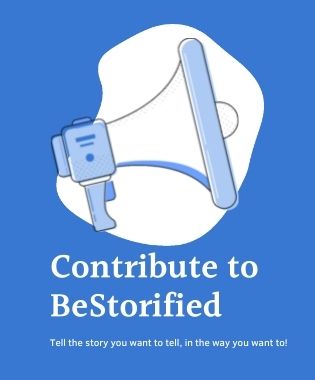Keep It Original: Why Plagiarism Detection Is Crucial for Blogging Success
- May 23, 2025
- Trends
The harsh reality of the modern blogging industry is that you need to produce high-quality authentic posts regularly to keep the audience interested in your content. Readers crave unique insights, and search engines reward blogs that bring something new to the table. Without a doubt, working under such pressure can make you become less creative and more stressed. Therefore, it’s easy to unintentionally blur the lines between inspiration and imitation when you want to share exciting stories with your followers.

It is no secret that duplicate content can damage your credibility, harm your search engine rankings, and even expose you to legal risks. Inevitably, plagiarism detection becomes a crucial part of every blogger’s daily routine. Luckily, services like Plagiarismcheck.org can help you spot sentences or even sections of your posts that resemble someone else’s ideas.
Let’s explore in detail why keeping your blog content original is essential and the ways you can maintain integrity and quality in every post.
The Importance of Content Originality in Blogging
Even though plagiarism can lead to many unpleasant consequences, the value of original content extends far beyond avoiding penalties. The first thing bloggers need to keep in mind is that their unique perspective is more important than consistent posting. Your blog is your voice, your perspective, and your unique contribution to the global conversation. Therefore, content originality is the cornerstone of blogging success for many reasons:
- Trust and credibility
When you consistently offer fresh perspectives, unique research, or personal experiences, your audience begins to see you as a reliable and knowledgeable source. This trust is the foundation of your audience’s loyalty and is very difficult to rebuild once shattered.
- Audience engagement
People are drawn to novelty and unique insights. When you post original content, you encourage more social shares and deeper engagement.
- Absence of legal issues
Unauthorized reproduction or distribution of someone’s original work can lead to costly lawsuits and substantial fines. Even if you are not aware of these laws, it does not mean that you can use this point as a valid defense.
- Avoiding reputational damage
News of intellectual dishonesty spreads rapidly in the online community, letting everyone know that you are not a trustworthy blogger. People can cancel your personal brand, leading to a drastic drop in traffic and audience engagement.
How Duplicate Content Affects Your SEO Rankings
While the ethical and reputational costs of plagiarism are severe, perhaps the most tangible consequence for bloggers is the devastating impact on SEO. Duplicate content SEO issues can result in lower rankings or even complete omission from search engine results pages. You will lose your organic traffic, especially if your blog relies on search visibility for growth.
SEO for bloggers involves understanding how search engines evaluate quality and uniqueness. The logic behind this process is rather simple: when your content is perceived as fresh and relevant, it signals to algorithms that your blog is a credible source.
For instance, the core issue for Google is that duplicate content creates a poor user experience and doesn’t bring them any value. Unfortunately, algorithms can’t determine which version of the content is the original, which leads to the wrong version being ranked or, worse, none at all.
The Power of Crafting Original Content for Better SEO
The good news is that by focusing on originality, you can naturally improve your SEO without spending extra resources. Here’s what you can do:
- Research unique angles and perspectives. Look for gaps in existing content and new insights you can share with your followers.
- Develop a strong content voice. This approach helps differentiate your content, even if you’re covering a common topic.
- Use personal experiences. Doing so adds depth and a human touch that resonates with readers.
- Don’t forget about proper citation. This isn’t just about avoiding plagiarism, but about demonstrating your commitment to accuracy and providing readers with additional resources.
Blog Content Strategy Tips
Continuing on, you can look at the following points that can significantly boost your blog’s unique value.
Conducting thorough research to write informative posts is one of the most popular tips you can find on the web. While research is essential, it’s how you use it that matters. Instead of simply aggregating information, you can analyze and synthesize it to draw your own conclusions.
Note that originality also means accuracy. Therefore, you should always verify claims and facts from reputable sources. It’s an effective strategy that helps you build trust with your audience and prevent the unintentional spread of misinformation.
Top Plagiarism Checkers Every Blogger Should Know
With all the information you already know about duplicate content, you now understand that using a reliable plagiarism checker is a smart and essential step in the content creation process. Luckily for bloggers, there are many plagiarism detection tools you can choose from when you want to check your posts before anyone sees them. Some are simple and free, while others provide in-depth analysis and integration options for professional use:
- Grammarly has a built-in plagiarism checker that scans your content against billions of web pages.
- Copyscape is one of the most widely used tools for detecting copied content on the web, perfect for scanning published pages.
- Quetext is known for its deep search technology and user-friendly interface.
- Plagscan offers a professional-grade plagiarism detection system that is ideal for content creators and editors.
Integrating Plagiarism Checkers into Your Blogging Workflow
Naturally, the ideal time to run a plagiarism check is after you’ve completed your draft but before you hit the publish button. Some bloggers also find it useful to run quick checks on specific paragraphs or sections during the drafting phase if they’re particularly concerned about unintentional plagiarism from their research notes.
Once you’ve used one of the tools we’ve mentioned above and reviewed the report, here’s what you can do next:
- Rewrite. If you see matches of some sections of your text, rewrite them in your own words and make sure your unique perspective shines through.
- Quote and cite. For direct quotes, enclose them in quotation marks and provide clear attribution to the original source.
- Attribute. Always provide clear attribution for statistics, facts, or ideas you’ve used from another source, even if you’ve rephrased them.
- Check again. After making revisions, it’s a good practice to run another check to confirm that everything looks perfect.
To Sum Up
The key takeaway from this article is that your blog is a reflection of you. Consequently, you can let others know about your principles and responsible attitude to blogging by avoiding plagiarism and providing your audience with accurate and relevant information.
- Add Animated Text Effects Quickly with Lyric Video Creator
- How Taylor Swift turns a dead girl trope into a survival story- The Fate of Ophelia
- What NCRB’s suicide numbers say about how we raise boys
- What Dharmendra’s heroes teach writers about the relatable protagonist
- Younger leaders, older fears: Why voters want change but also guarantees






